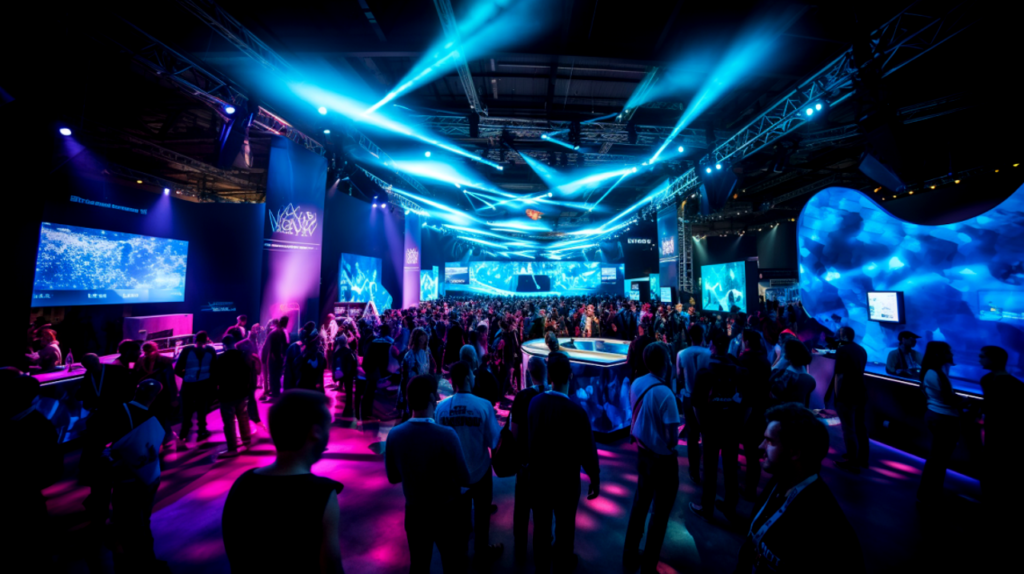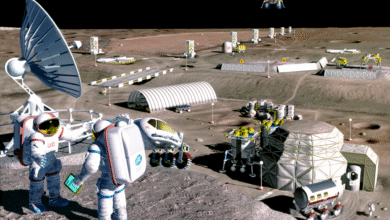
In today’s dynamic world, the crossroads of technology and culture have become a fertile ground for innovation. This article delves into the intricate relationship between technology and culture, exploring how each influences the other and, more importantly, how businesses and individuals can actively foster innovation at this intersection.
Read More: Must-Attend Top Tech Events in UK 2024
Cultivating Innovation: The Intersection of Tech and Culture

Definition of Innovation
Innovation is the engine driving progress and evolution. It entails the introduction of something new or substantial improvements to existing ideas, products, or processes. Understanding the essence of innovation is crucial for appreciating its impact on both technology and culture.
Significance of Innovation in Tech and Culture
The symbiotic relationship between technology and culture holds immense significance. It shapes not only the way we live but also how we interact with the world. This section will unravel the profound impact innovation has on both technological advancements and cultural evolution.
The Tech-Culture Nexus
How Technology Influences Culture
Advancements in technology have a transformative effect on culture. From the dawn of the internet era to the rise of social media, technology continually reshaped the way people communicate, consume information, and express themselves.
How Culture Drives Technological Advancements
Conversely, cultural trends and societal shifts play a pivotal role in steering technological developments. Factors such as consumer preferences, ethical considerations, and cultural values contribute significantly to the direction of technological innovations.
Fostering a Culture of Innovation
Creating an Innovation-Friendly Environment
Businesses play a crucial role in cultivating innovation by fostering an environment that encourages experimentation and risk-taking. This includes providing resources for research and development, supporting a culture of continuous learning, and acknowledging and rewarding creative ideas.
Encouraging Cross-disciplinary Collaboration
Innovation often thrives at the intersection of different disciplines. Encouraging collaboration between individuals with diverse skills and backgrounds can lead to the synthesis of ideas from various perspectives, fostering groundbreaking solutions.
Real-world Examples
Tech Giants Leading Cultural Shifts
Exemplary companies such as Google, Apple, and Facebook not only revolutionize technology but also lead cultural shifts. Their products and services often mirror and influence societal trends, showcasing the intricate connection between tech and culture.
Cultural Movements Shaping Technological Innovations
Historically, cultural movements have been instrumental in shaping technological innovations. The countercultural movements of the 1960s influenced the personal computer revolution, and the sustainability movement continues to impact the development of green technology.
Challenges in Innovation
Balancing Tradition and Innovation
One of the challenges is finding a delicate balance between preserving cultural traditions and embracing innovation. This involves respecting cultural heritage while fostering an environment that encourages progressive thinking.
Overcoming Resistance to Change
Resistance to change is a common obstacle to innovation. Addressing fears and uncertainties associated with new technologies is crucial for fostering a culture where innovation is welcomed and embraced.
The Role of Leadership
Leadership’s Impact on Innovation
Leadership plays a critical role in shaping the culture of innovation within an organization. Supportive and visionary leadership sets the tone for the entire workforce, inspiring creative thinking and risk-taking.
Building an Innovation-Centric Leadership
Nurturing leaders who prioritize and model innovative thinking is essential. Leadership development programs can help cultivate a mindset that values and encourages continuous innovation at all levels of the organization.
The Future Landscape
Predictions for Tech-Culture Integration
As technology and culture continue to evolve, predicting future integration trends becomes essential. This section explores potential advancements, anticipating how the intersection of tech and culture will shape the future.
Potential Innovations on the Horizon
Exploring potential innovations such as augmented reality, artificial intelligence, and biotechnology provides insights into the exciting possibilities awaiting at the intersection of tech and culture.
Case Studies
Examining Successful Tech-Culture Synergies
Analyzing successful case studies helps identify patterns and strategies that have effectively merged technology and culture for mutual benefit. Learning from success stories is instrumental in crafting effective innovation strategies.
Learning from Failed Attempts
Understanding failures is equally important. Examining unsuccessful attempts provides valuable lessons, helping businesses avoid common pitfalls in tech-culture integration and learn from past mistakes.
Benefits of Tech Culture Integration
Enhanced Creativity and Problem-solving
The synergy between technology and culture sparks creativity and problem-solving. This section explores how combining these elements results in the development of innovative solutions that resonate with diverse audiences.
Improved User Experience and Engagement
Considering cultural nuances in product development enhances user experience and engagement. Recognizing the diversity of global markets is key to creating products that appeal to a wide range of consumers.
Measuring Innovation
Key Metrics for Evaluating Innovation
Establishing measurable metrics is crucial for evaluating the success of innovation initiatives. Metrics may include the number of new ideas generated, successful product launches, or efficiency improvements.
Balancing Quantitative and Qualitative Assessments
While quantitative data provides tangible insights, qualitative assessments capture the subjective impact of innovation on individuals and communities. Striking a balance between the two ensures a comprehensive evaluation of innovation efforts.
Implementing Innovation Strategies
Practical Steps for Businesses
This section outlines practical steps for businesses to implement innovation strategies. Investing in research and development, fostering a culture of experimentation, and actively seeking feedback are essential components.
Nurturing Innovation at the Individual Level
Encouraging individuals to embrace curiosity, take risks, and pursue personal and professional development fosters a culture of innovation from the ground up. Empowering employees at all levels contributes to a more innovative organization.
Cultural Impact on Product Development
Tailoring Products to Cultural Preferences
Understanding cultural preferences is crucial in product development. This involves market research, localization strategies, and adapting products to meet specific cultural needs for better market acceptance.
Avoiding Cultural Insensitivity in Tech
Awareness of cultural sensitivities is essential to avoid unintentional offenses. Companies must prioritize inclusivity and diversity in their development processes to create products that resonate positively with diverse audiences.
Ethical Considerations
Addressing Ethical Concerns in Tech-Culture Integration
Ethical considerations are paramount in tech-culture integration. Ensuring responsible innovation involves addressing potential ethical concerns, such as data privacy, environmental impact, and societal implications.
Ensuring Responsible Innovation Practices
Establishing ethical guidelines and practices is essential for guiding technological advancements responsibly. This proactive approach helps prevent negative consequences and builds trust with consumers.
Future Challenges and Solutions

Anticipating and Preparing for Challenges
Anticipating future challenges allows businesses to proactively prepare for potential obstacles in the tech-culture integration landscape. This section explores potential challenges and proactive solutions.
Innovative Solutions to Future Problems
Innovation isn’t just about solving current problems; it’s about anticipating and developing solutions for future challenges. This forward-thinking mindset positions businesses for sustained success in the ever-evolving tech and culture landscape.
Read More: 8 Tips for Glamping in Zion National Park
The Final Words
Recap of Key Points
Cultivating innovation at the intersection of tech and culture is an ongoing journey. This section summarizes key insights, emphasizing the symbiotic relationship and the continuous nature of the innovation process.
Emphasizing the Ongoing Nature of Innovation
It’s essential to emphasize that innovation is not a destination but a continuous process. Businesses and individuals must remain adaptable, open to change, and committed to pushing boundaries to thrive in the dynamic landscape of tech and culture.








2 Comments